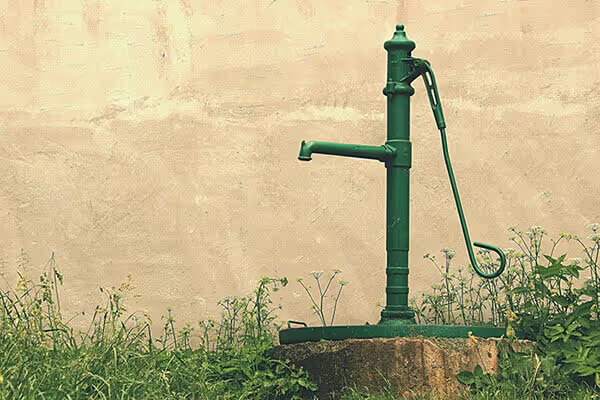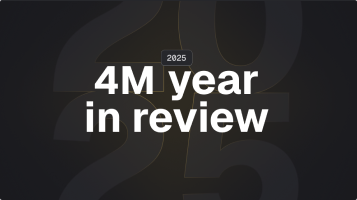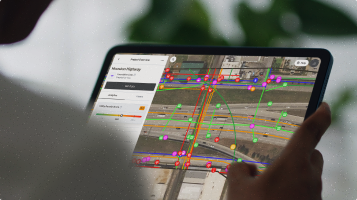Let's Talk About Water, and Where it Comes From
Written by

Published on
July 16, 2021


Table of contents
The people in charge of our water supply, be it local authorities and municipalities or infrastructure owners, are constantly looking to renew and repair the existing water infrastructure to keep the various systems safe and environmentally responsible as possible. But how do they decide if it is time to rebuild or perhaps start a renewal project to their pipelines? What factors weigh in on their decision?
An interesting perspective was brought in an article recently published by Environment Journal covering a comprehensive survey conducted by ReNew Canada on current practices and opinions related to the management, design, and procurement of public water infrastructure in Canada. Over 370 engineers and consultants responded to the survey giving a rare in-depth look into the inner workings of the water sector.
The results revealed a strong preference for green and innovative linear infrastructure technologies, indicating that environmental considerations play a major role in the decision-making for future asset renewal strategies, mainly rehabilitation and replacement. It seems that the experts encourage clients to see a bigger picture when deciding on infrastructure solutions, one that includes calculating in indirect costs and environmental aspects.
Breaking down this system to its components sets them at 4 main groups:
Project objectives – How old is this infrastructure? How big? How long? Where is it located?
Site parameters – What is on the surface? Are there any geographical challenges?
Schedule – Is it a pre-planned job or an emergency service?
And last but not least – Budget.
However, this system is no longer complete as experts are increasing awareness to indirect costs that come into play; These include impact to landscape and trees, disturbance to local residents, traffic pattern changes and congestion, also resulting in increased emissions from idling traffic and the ongoing disruption of local businesses and the usual public life.
Going green is obviously important, but it is not limited to greenhouse gases or wild flora.
The survey revealed that an alarming number of respondents encounter lead infrastructure, with 43% of participants finding lead pipes "regularly" and 45% "sometimes".
This is in part due to the simple fact that many utilities really don’t know where lead pipes are located because of missing and incomplete information. To remedy the situation, new approaches are being utilized, like artificial intelligence, to determine where such pipes may be located.
Once it was decided an action has to be taken, what then?
How do the authorities decide what approach to take to the execution? The survey shows that an even split is most often recommend between full open-cut replacement and trenchless excavation solutions when working on renewal projects with municipal clients for linear water infrastructure. All those decisions are made based on assessments of data. The majority (93%) of survey respondents indicated that their customers use leak detection or other condition assessment technology prior to proceeding with the execution of a project in the field.
Once over that hurdle, comes the tricky part of selecting the right technology and processes for the selected project. The survey shows a relatively equal segmentation between the main priorities for selecting a technology; Profit, reduced disruption, environmental impact and overall cost. Over 37% of survey participants ranked environmental factors as top priority, pointing to a shift of the scale from economical to green. The results tell of a wide movement pushing for green and innovative technologies to help minimize and mitigate environmental harm and impact.
It also speaks volumes of the power engineers and consultants have in encouraging their clients to adopt new methods and greener processes in their operations.
As a company directly involved in the utilities market, we often talk about the benefits to project owners or the resulting cost reductions but that is not the whole story. The fact that our system operates remotely, with no actual disturbance in the area, leads to a wide array of eliminated indirect costs that are both environmental and economical. Our ability to pinpoint subsurface infrastructure makes exploratory digs redundant saving man hours as well as operational costs or damages to landscapes. There is no end to this drill-down of benefits, as the underground mapping solutions from 4M Analytics are actually changing the way we think about Utilities Engineering and the subsurface in general.
The world is going greener in both public opinion and policy, and that is extremely visible in the utilities and infrastructure spheres, as authorities, owners and suppliers alike make huge steps towards smarter solutions and better work methods.
Even the way we think of the underearth is going to change thanks to the innovative platform developed by 4M.
To learn more about our solutions or request a demo please contact -
Raz@4m-a.com
Source: www.environmentjournal.ca
Recent blog posts

Our Newsletter
Join 7k infrastructure professionals
Get monthly insights on ways to build smarter, faster and safer with Utility AI.

.avif)




